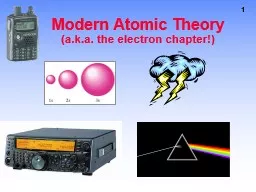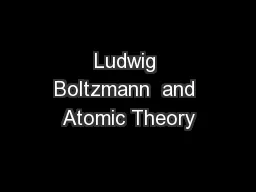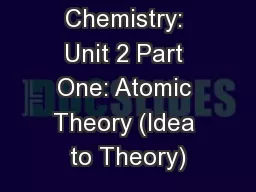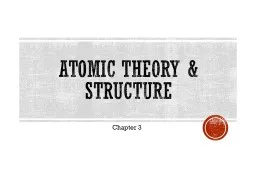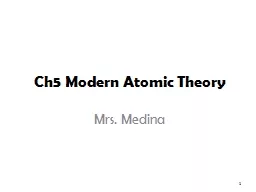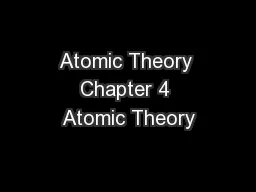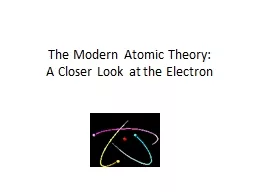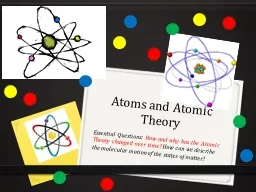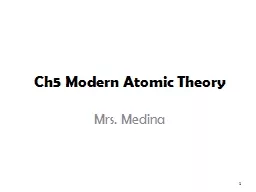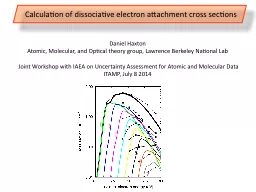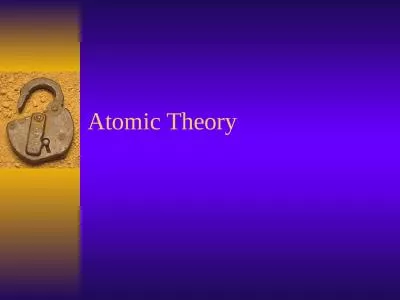PPT-Modern Atomic Theory (a.k.a. the electron chapter!)
Author : marina-yarberry | Published Date : 2018-11-03
Excited Gases amp Atomic Structure Atomic Line Emission Spectra and Niels Bohr Bohrs greatest contribution to science was in building a simple model of the atom
Presentation Embed Code
Download Presentation
Download Presentation The PPT/PDF document "Modern Atomic Theory (a.k.a. the electro..." is the property of its rightful owner. Permission is granted to download and print the materials on this website for personal, non-commercial use only, and to display it on your personal computer provided you do not modify the materials and that you retain all copyright notices contained in the materials. By downloading content from our website, you accept the terms of this agreement.
Modern Atomic Theory (a.k.a. the electron chapter!): Transcript
Download Rules Of Document
"Modern Atomic Theory (a.k.a. the electron chapter!)"The content belongs to its owner. You may download and print it for personal use, without modification, and keep all copyright notices. By downloading, you agree to these terms.
Related Documents

